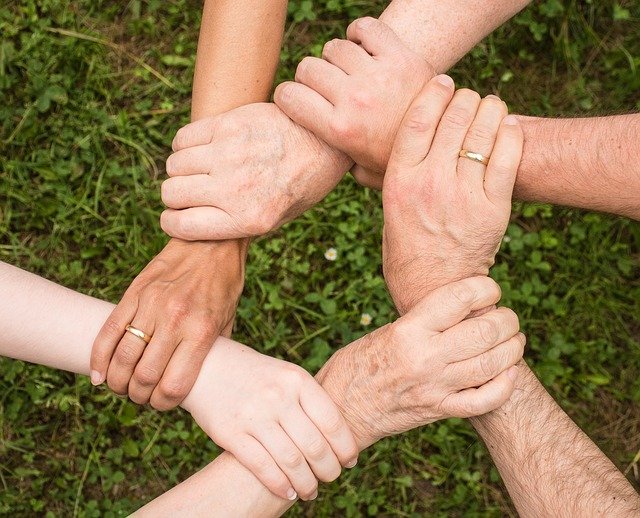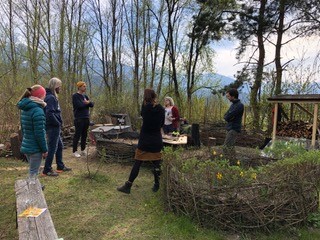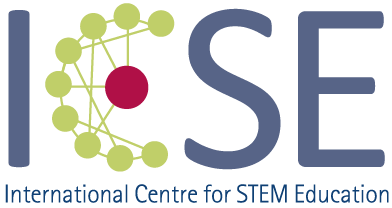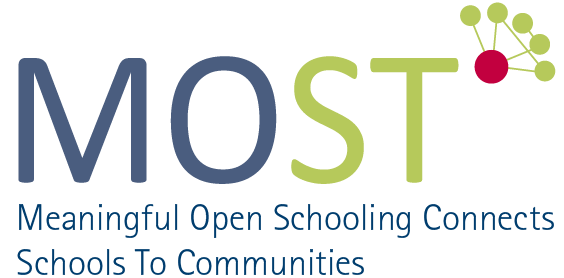A participatory way of thinking, acting and meeting current challenges
Suzanne Kapelari, University of Innsbruck, Faculty of Teacher Education
Our Horizon 2020 project MOST (Meaningful Open Schooling Connects Schools To Communities) opens up formal science education and established partnerships between schools and their communities (families, citizens, businesses, science education providers etc.). Together, they work on environmental school-community-projects -participatory projects which directly respond to the needs and values of those involved, benefitting the community as a whole and making schools agents of community well-being. “Co-creation” is an essential approach of these school-community-projects.
Personal Engagement and the Creation of Joint Value
From an economic point of view ‘Co-creation offers firms and their network of actors significant opportunities for innovation, as each actor offers access to new resources through a process of resource integration’ (Frow, Nenonen, Payne & Storbacka, 2015). In addition, co-creation is also a transformative strategy to trigger a paradigm shift from the traditional top-down model to a demand and bottom-up driven approach. Especially because it highlights the importance of personal engagement and joint value creation.


Not only since the pandemic has it hit us that the global society of humanity is facing a range of major challenges that we need to tackle now and even more so in the future. Presumably two strategies might come in handy when it comes to facing a time of great uncertainty. The first one is easy and familiar – find a strong leader and follow this person blindly. The second one is more rewarding – motivate each and every member of the society to take responsibility and to create solutions together.
Opening up one’s Mind
Co-creation is an approach that asks people to come together, to think jointly and come up with a solution that fits a particular setting and particular needs of the people involved. Co-creation is a participatory approach and establishes settings in which ideas support each other and solutions are created that take a range of perspectives into account. Co-creation is not all about inviting people and talking about problems but asking all participants to be ready to accept a common solution and act accordingly. Thus, it is all about opening up your mind, listening to others, creating new ways of thinking and establishing shared values.
Unforseen Perspectives as a Chance for Society
The European Open Schools for Open Societies approach asks for a “transformation of schools to innovative ecosystems, acting as shared sites of science learning for which leaders, teachers, students and the local community share responsibility, over which they share authority, and from which they all benefit through the increase of their communities’ science capital and the development of responsible citizenship” (Cordis 2020). This will lead to a fundamental change in the way schools, teachers and students see and value themselves. Inviting members of the local society to engage in co-creation activities and to develop community projects together is one step to drive the development in this direction. A co-creation approach asks head teachers, teachers and students to open up their mind and to develop school projects not only for but with members of the local society.
Open Schooling projects, like the MOST project, may start with a school-based idea or particular curricular requirements that needs to be covered. By co-creating the project with members of the local society responsibly, a school-based project may take a not necessarily plannable path and may reach a completely different goal. However, it will always provide unforeseen perspectives and those involved will become change agents in their society.
Cited Sources
CORDIS (2020). Open Schools for Open Societies. Latest access 20.04.2021: https://cordis.europa.eu/project/id/741572/de
Frow, P., Nenonen, S., Payne, A. & Storbacka, K. (2015). Managing Co-creation Design: A Strategic Approach to Innovation. British Journal of Management, Vol. 26, 463–483 (2015). DOI: 10.1111/1467-8551.12087

